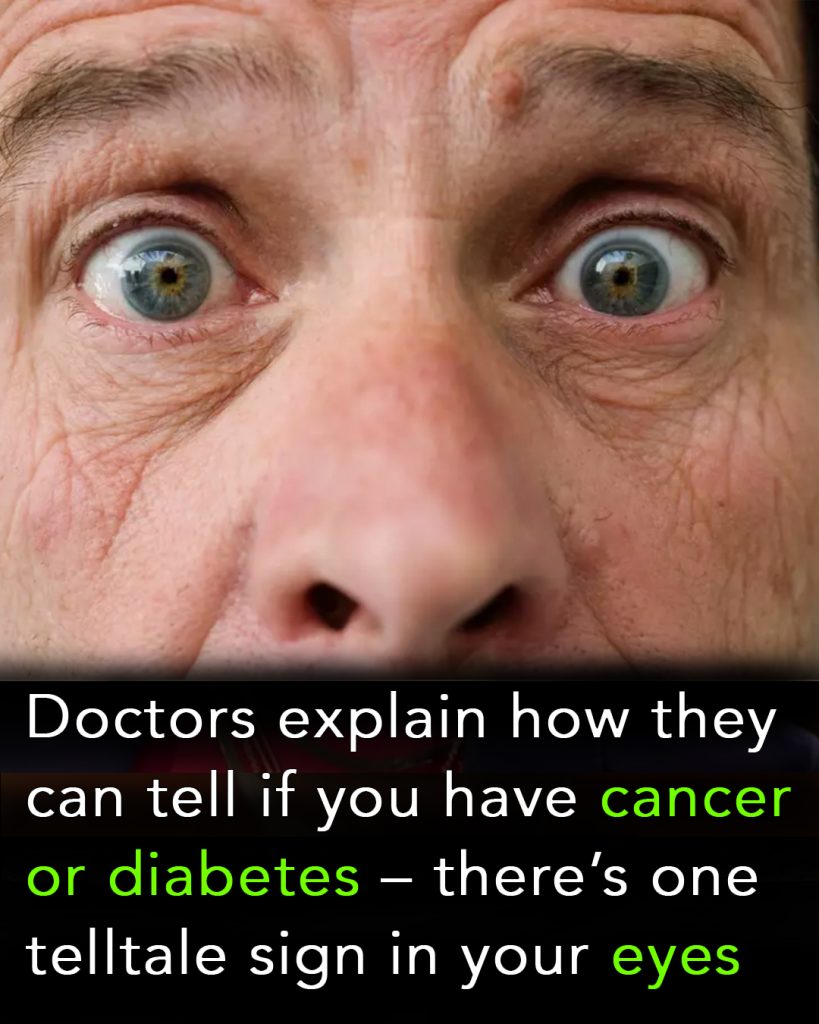It turns out your eyes might be doing a lot more than helping you navigate your world—they could also serve as powerful indicators of your overall health. According to medical experts, trained professionals can spot early warning signs of serious conditions like cancer, diabetes, and heart disease simply by examining your eyes. That means your next visit to the eye doctor might reveal far more than just whether you need a new prescription for glasses or contacts.

While most people associate the detection of major illnesses with blood tests, MRIs, or CT scans, your eyes can sometimes reveal symptoms even before you start feeling unwell. This is largely because the eyes are home to a complex system of tiny blood vessels, delicate nerves, and sensitive tissues—all of which can respond rapidly to changes in your body. These changes may be subtle, but to a trained eye specialist, they can speak volumes about what’s happening elsewhere in your system.
Dr. Raj Dasgupta, Chief Medical Officer at Sleepopolis, told the Daily Mail that “a lot of diseases that affect the whole body can leave clues in the eyes.” That’s why, he emphasizes, regular eye exams are critical—not only for protecting your vision but also for flagging potential systemic issues long before other symptoms appear. In some cases, these exams can serve as the first line of defense, catching conditions at an early, more treatable stage.
Dr. Jacqueline Bowen, the incoming president of the American Optometric Association, adds even more weight to the argument for consistent eye care. According to her, optometrists are trained to detect up to 270 different health conditions through standard eye exams—many of which have nothing to do with the eyes directly. This makes your annual optometrist appointment a potentially life-saving checkup.
One of the more serious conditions that might first be detected through the eyes is cancer. Ocular melanoma, a rare but dangerous form of eye cancer, begins in the uvea, the middle layer of the eye. It can initially present as a dark spot on the iris, but it may also bring on symptoms like blurred vision, flashes of light, or an unusual change in the size or shape of your pupil. Dr. Dasgupta notes that swelling around the eyelids or seeing dark or bright spots in or near the eyes can also be red flags. Alarmingly, cancers that start in other parts of the body—like the lungs or breasts—can metastasize to the eyes, making visual changes the first sign something’s gone wrong elsewhere.
There’s also retinoblastoma, a rare cancer that mostly affects children. It often shows up as a white spot or reflection in the pupil, sometimes first noticed in family photos. Although it’s serious, retinoblastoma has a remarkably high survival rate—around 96% when caught early—further underscoring the value of paying close attention to visual changes.
Diabetes is another major condition that often leaves telltale signs in the eyes. In fact, some people first learn they have diabetes thanks to an eye exam. One study revealed that about 20% of Americans with diabetes were initially diagnosed based solely on symptoms observed during routine visits to the optometrist. Elevated blood sugar levels can damage the tiny blood vessels in the retina, leading to diabetic retinopathy—the leading cause of blindness among working-age adults in the United States. Eye doctors may detect leaking blood vessels or tiny hemorrhages in the retina, which can appear before the patient experiences any noticeable symptoms.
Similarly, high blood pressure and elevated cholesterol levels can create visible changes in the eye’s blood vessels. These might include narrowing, thickening, or even rupturing of the vessels—clear signs of cardiovascular trouble that might otherwise go unnoticed. Identifying these problems early can prompt further testing and potentially lifesaving treatment.
That’s why both Dr. Dasgupta and Dr. Bowen strongly advocate for making yearly eye exams a routine part of your healthcare plan. According to Dr. Dasgupta, “Your eyes are the only place in the body where we can directly see blood vessels and nerves without cutting you open.” It’s a unique window into your body’s internal health, and one that’s too often overlooked.
Many people think of vision checks as something to do only when your eyesight begins to blur or when you need a new pair of glasses. But as science continues to show, your eyes can reveal much more than changes in vision—they may reflect the earliest signs of systemic disease. This perspective encourages a shift in how we view optometry: not just as a vision care specialty, but as a crucial component of whole-body wellness.
Modern eye exams, using advanced imaging technology and diagnostic tools, are more powerful than ever. They allow doctors to get incredibly detailed views of the blood vessels and nerves at the back of the eye, offering insights that no blood test or physical exam can match. And because eye changes can precede other symptoms by weeks or even months, these exams can serve as critical early alerts.
In light of all this, skipping your annual eye exam doesn’t just risk your vision—it could also mean missing a chance to catch serious diseases before they become life-threatening. From detecting early cancers to flagging diabetic complications, eye doctors are playing an increasingly important role in modern medicine. Their work reminds us that health is often about what we can’t see—unless someone trained knows exactly where to look.
So, the next time you’re debating whether or not to book that optometrist appointment, remember: it might just be the most revealing checkup you get all year. Your eyes aren’t just windows to the soul—they’re windows into your health.





